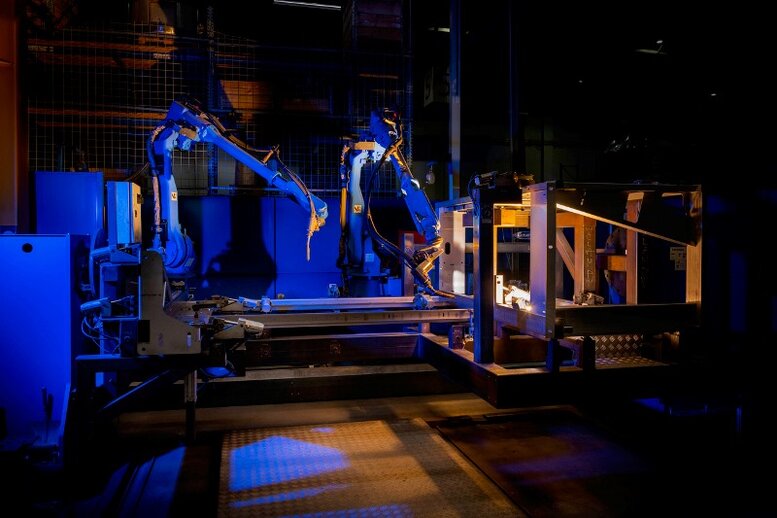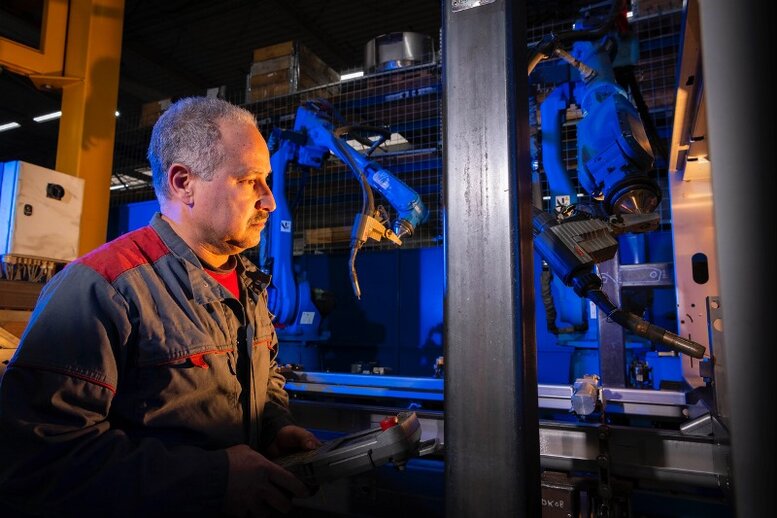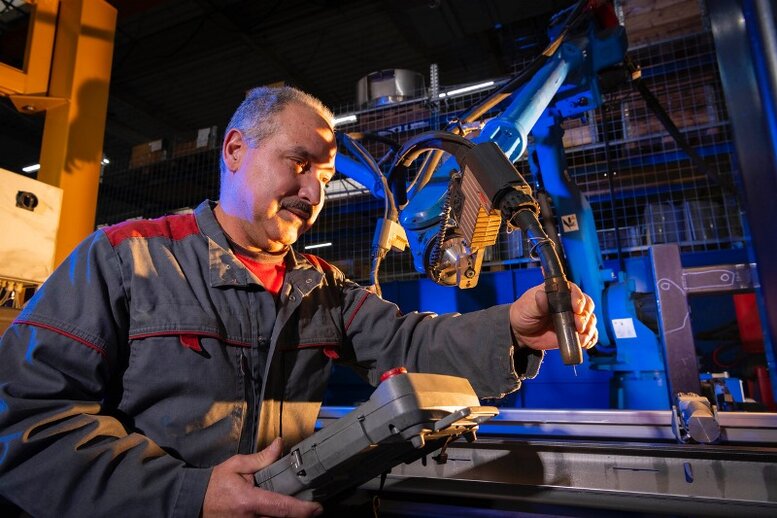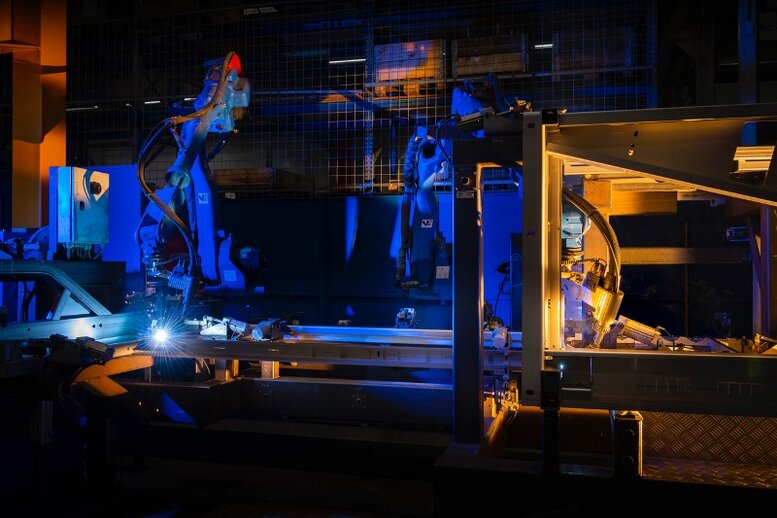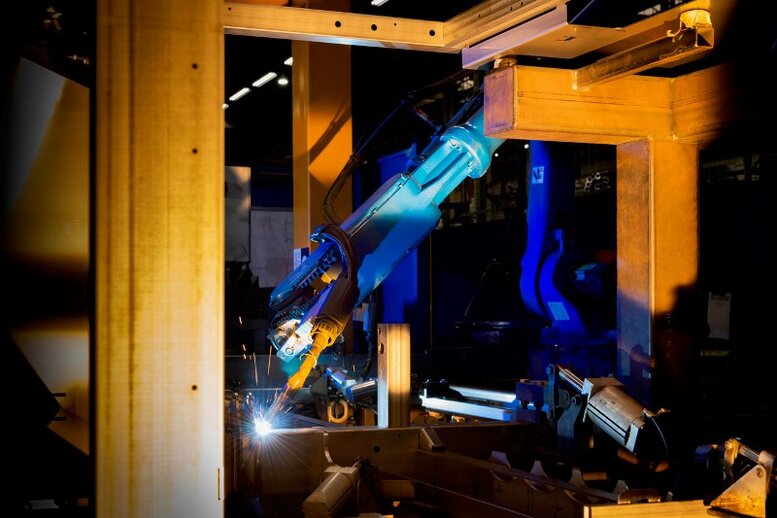Med internationellt ledande teknologi vill vi skapa tillväxt på hemmaplan.
With twelve Yaskawa robots, Kasteel Metaal can satisfy demand
At Kasteel Metaal B.V. in Alphen aan de Rijn, the eleventh and twelfth Yaskawa welding robots have recently been installed. However, the company's automation story already started in 2006, with their first Yaskawa welding robot. During this 16-year partnership, Kasteel's production capacity has grown enormously and the number of employees has almost doubled.
Heavy, repetitive workload
In 1997 a product was developed and eventually marketed together with a major customer, a supplier of cow milking robots. In the first years this involved dozens of units a week, but eventually 2,000 cow milking robots were made by hand in six years. Today there are over a hundred made a week. At the time, this seemed enough reason to start automating, because one cow milking robot entailed a great deal of repetitive welding. Demand went up to 5,000 – 6,000 a year. “I had wanted to automate for some time, only our customer was developing a new revision,” says Kees Bogerd, Technical Director at Kasteel Metaal.
Getting it done together
After all that time, the company started the orientation process with a number of suppliers of welding robot installations. “We had no experience with this. What we make is a very large workpiece: 3.20 meters wide, more than 2 meters high and 1 meter deep. It contains 60 parts and 285 welds. It was an ambitious piece of work from the start and also made of stainless steel,” continues Bogerd. There was not enough production space and Kasteel wanted to weld the product in one fixture. Stainless steel shrinks enormously and deforms, so it is very difficult to keep to size. The advice from everyone was to make the product in sub-assemblies and then a final composition in one go. This method would involve intermediate stocks, which the company did not want. Yaskawa also gave that advice in the beginning. “In the end, Yaskawa went along with our plans and together we managed to get it done.”
The first product to successfully come off the welding robot required some time and effort. Kasteel developed the mould themselves together with another Yaskawa Benelux partner. All in all, it took all parties together about nine months to get something good off the ground. “We are currently unique in what we make. There have been other parties that wanted to make this product, but they never succeeded," says Bogerd with some pride. The customer even asked if Kasteel would like to go to the US to make the product there as well. “It's just a very difficult product. It is large, voluminous and we have mastered it well in the meantime.”
In total there were ten Yaskawa welding robots at Kasteel, and one or more products are made on each. Very large welding installations are used for this: 15 meters long on which the largest Yaskawa robot arm is mounted. Some installations weld six different products, but there is also a smaller one that only welds one product. The eleventh robot was delivered at the end of February and a large welding robot will be added before the summer.
Good, open and honest
Why Yaskawa was chosen 16 years ago was for a few reasons. “The relationship was good, open and honest,” says Kees Bogerd. “Produlas (now RoboFlex) was the system integrator and Yaskawa the supplier. We had confidence in them.” Another advantage was that Kasteel worked with a Fronius welding source, in their view the best for stainless steel. The Yaskawa welding robot could be supplied with this, which further strengthened the choice.
In 2006, Kasteel started with one welding robot, but a second was soon added. Box frames and fences were then made on the robot installation and later a small V-setup was added. The production location in Alphen aan de Rijn was over capacity, so the decision was made to move the welding robots to another, larger location. At the same time, the customer decided to split production and a second supplier was found. At that time, 1,500 cow milking robots were made per year. The second supplier received the moulds, drawings and welding programs from Kasteel, but was unable to make the product. Due to a subsequent revision of the product and a temporary stall in production numbers, the customer decided to keep production exclusively at Kasteel. Then it was decided to add another large welding robot.
Constant quality level
This is Kasteel's largest customer and the welding robots are used much less for their other customers. The production of the cow milking robots is so repetitive and year-round, while the production for other customers is often only for three months and therefore a lot more volatile. “We don't think this continuously recurring work is right to give to our people year in, year out,” says Bogerd. “We also wanted a constant level of quality. Out of the 285 welds, maybe three need some extra attention. The scalability of production and the constant quality were the deciding factors to start automation.”
Contrary to employees’ expectations, the number of welders has only increased. Before this automation phase started, Kasteel worked with 65 people, now they employ 120. There are 15 operators for the 10 welding robots and a lot of welding is also done by hand. “We need manual production to properly design automated production. That knowledge must remain up-to-date, no job threat whatsoever.” In a market that is becoming more and more voluminous and generic, Kees Bogerd thinks this is a good way to keep production in the Netherlands. With 12 welding robots soon, Kasteel will be able to meet the growing demand for the time being.




















